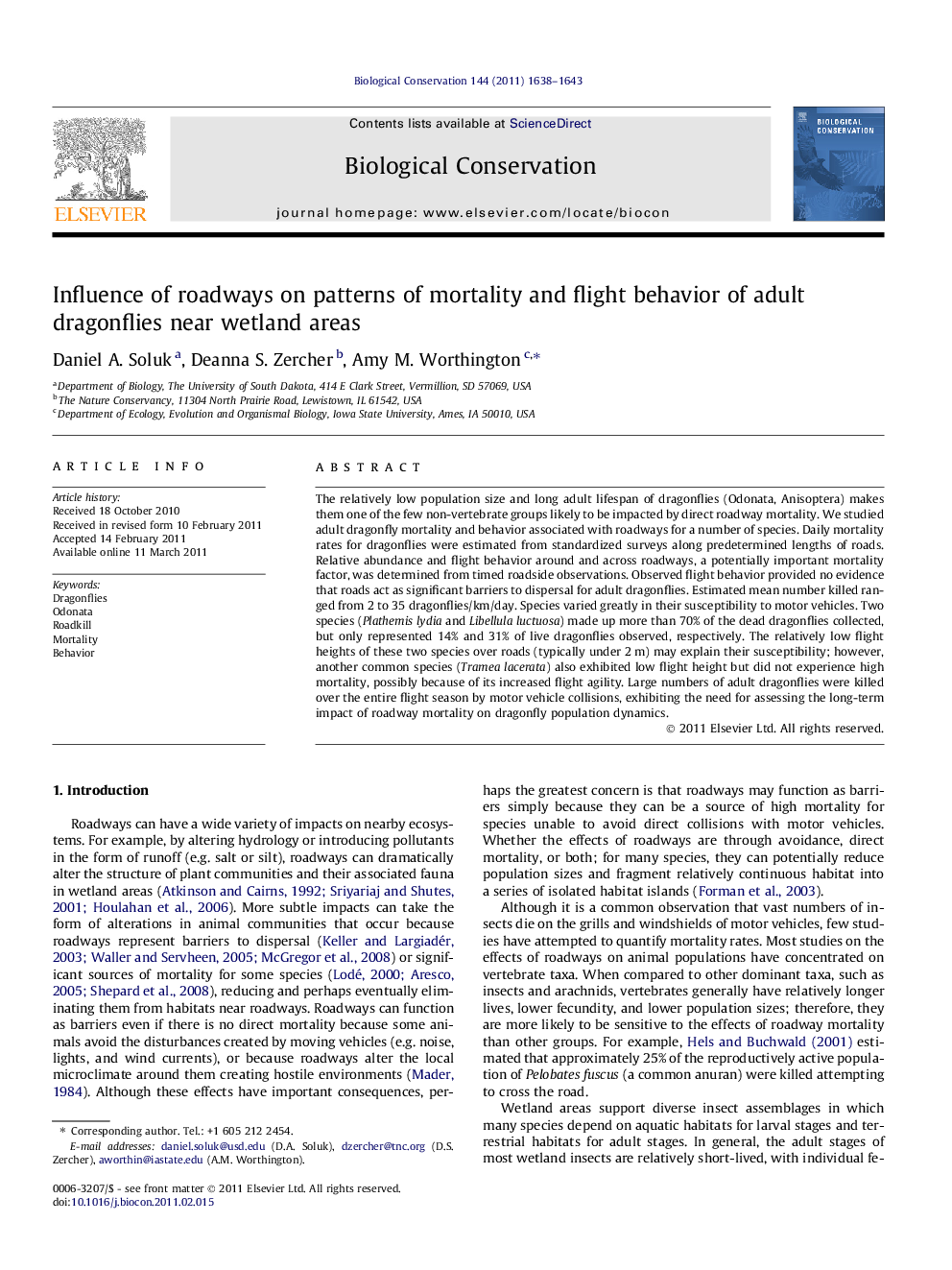| Article ID | Journal | Published Year | Pages | File Type |
|---|---|---|---|---|
| 4386012 | Biological Conservation | 2011 | 6 Pages |
The relatively low population size and long adult lifespan of dragonflies (Odonata, Anisoptera) makes them one of the few non-vertebrate groups likely to be impacted by direct roadway mortality. We studied adult dragonfly mortality and behavior associated with roadways for a number of species. Daily mortality rates for dragonflies were estimated from standardized surveys along predetermined lengths of roads. Relative abundance and flight behavior around and across roadways, a potentially important mortality factor, was determined from timed roadside observations. Observed flight behavior provided no evidence that roads act as significant barriers to dispersal for adult dragonflies. Estimated mean number killed ranged from 2 to 35 dragonflies/km/day. Species varied greatly in their susceptibility to motor vehicles. Two species (Plathemis lydia and Libellula luctuosa) made up more than 70% of the dead dragonflies collected, but only represented 14% and 31% of live dragonflies observed, respectively. The relatively low flight heights of these two species over roads (typically under 2 m) may explain their susceptibility; however, another common species (Tramea lacerata) also exhibited low flight height but did not experience high mortality, possibly because of its increased flight agility. Large numbers of adult dragonflies were killed over the entire flight season by motor vehicle collisions, exhibiting the need for assessing the long-term impact of roadway mortality on dragonfly population dynamics.
